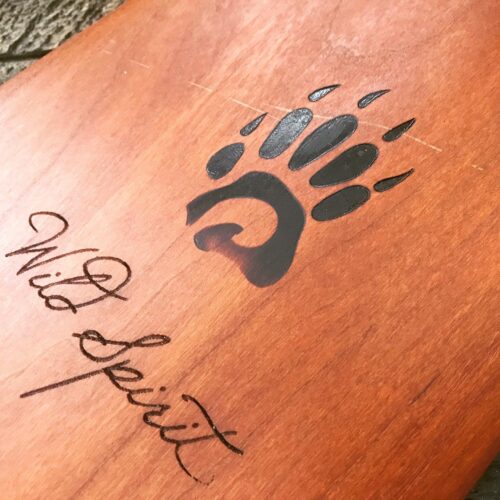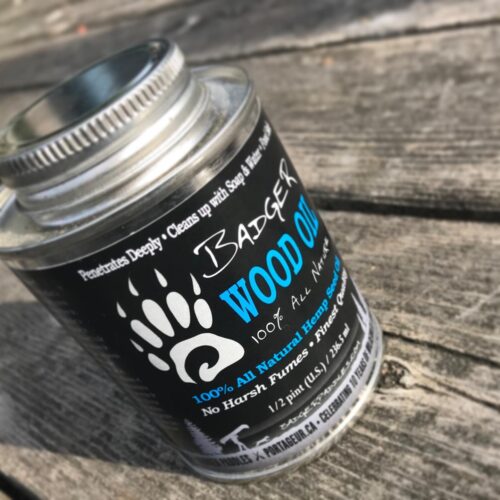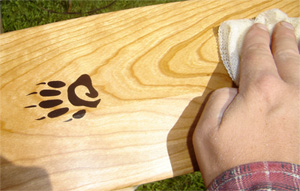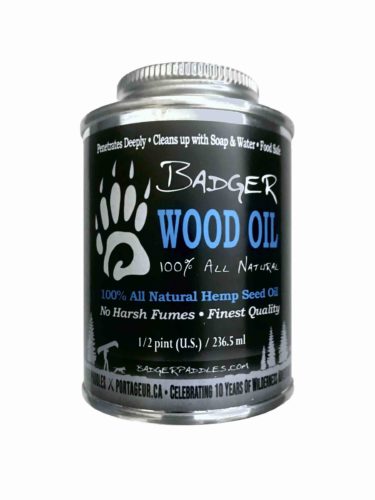
Maintenance
MAINTAIN YOUR OILED CANOE PADDLE WITH THESE QUICK AND EASY STEPS
1. Clean 2. Sand 3. Apply 4. Buff 5. Wipe 6. Cure
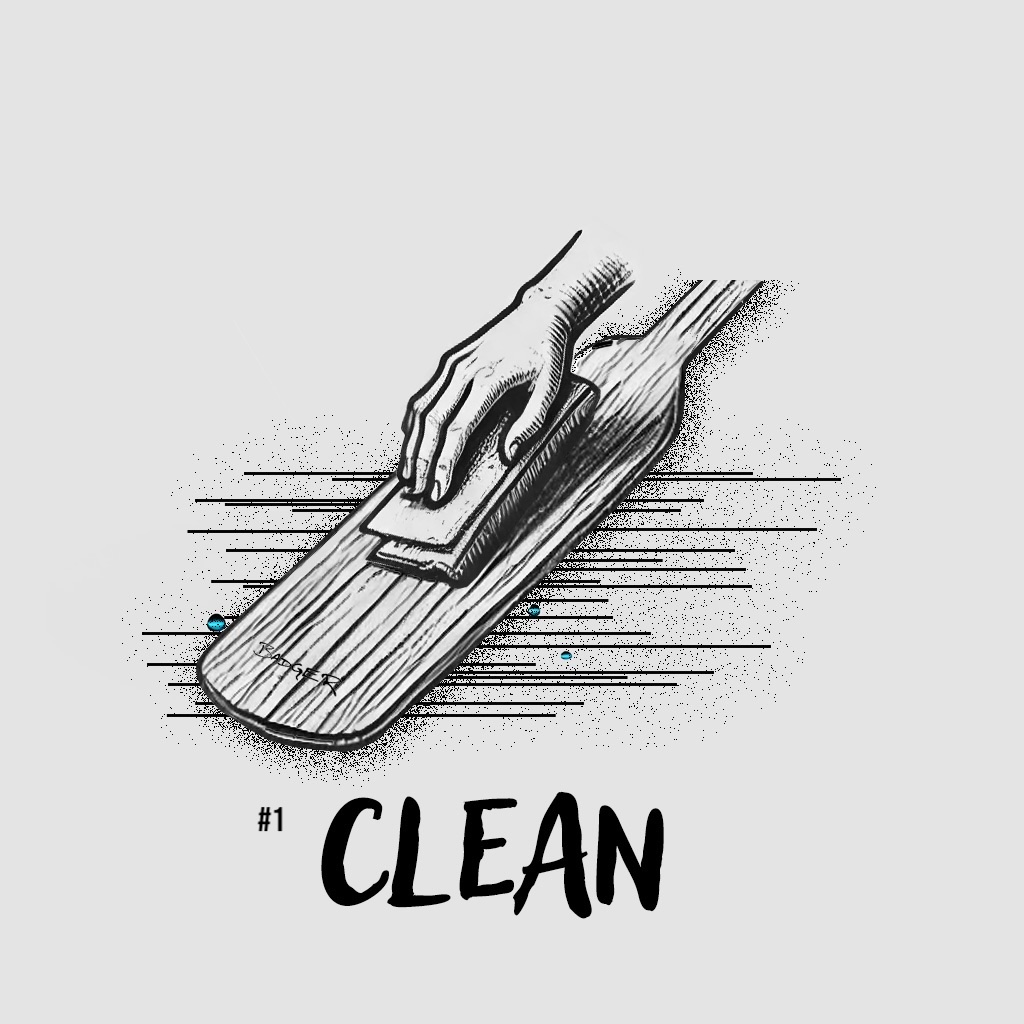
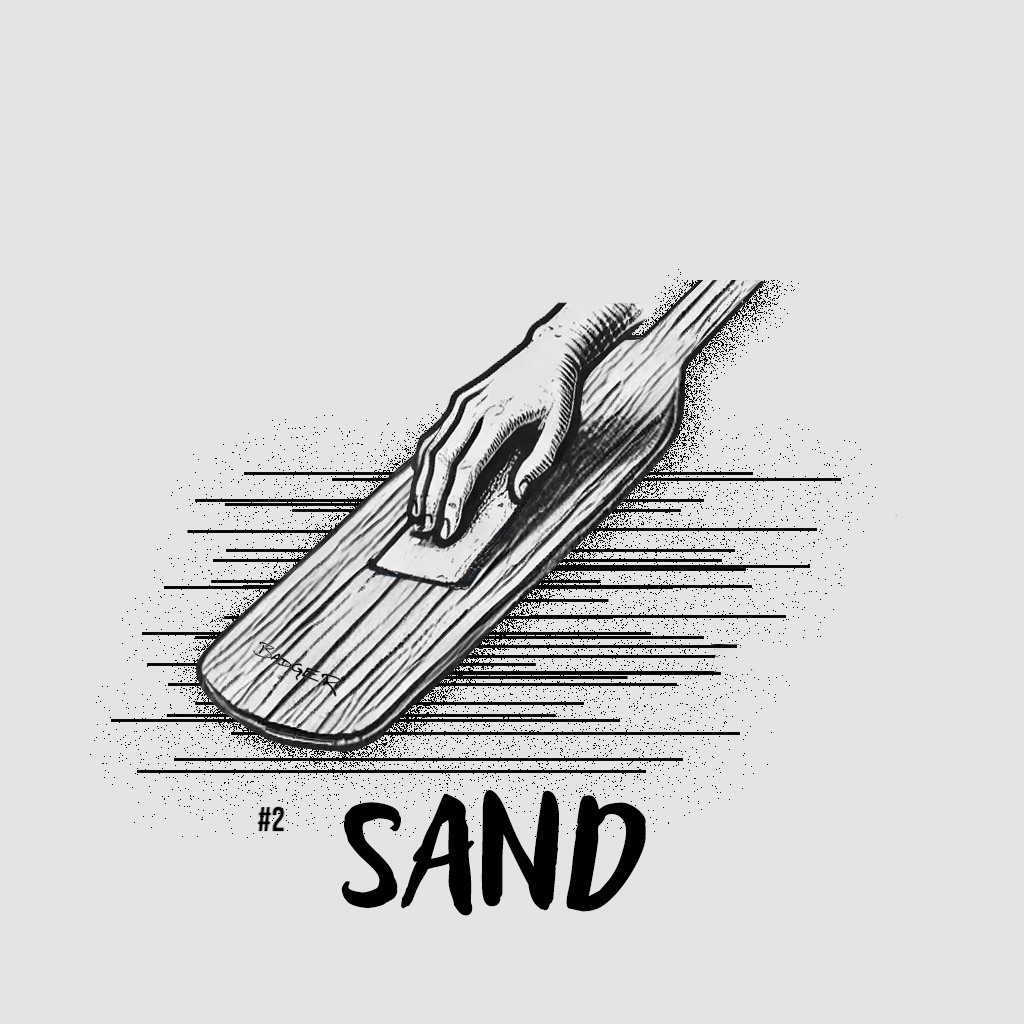
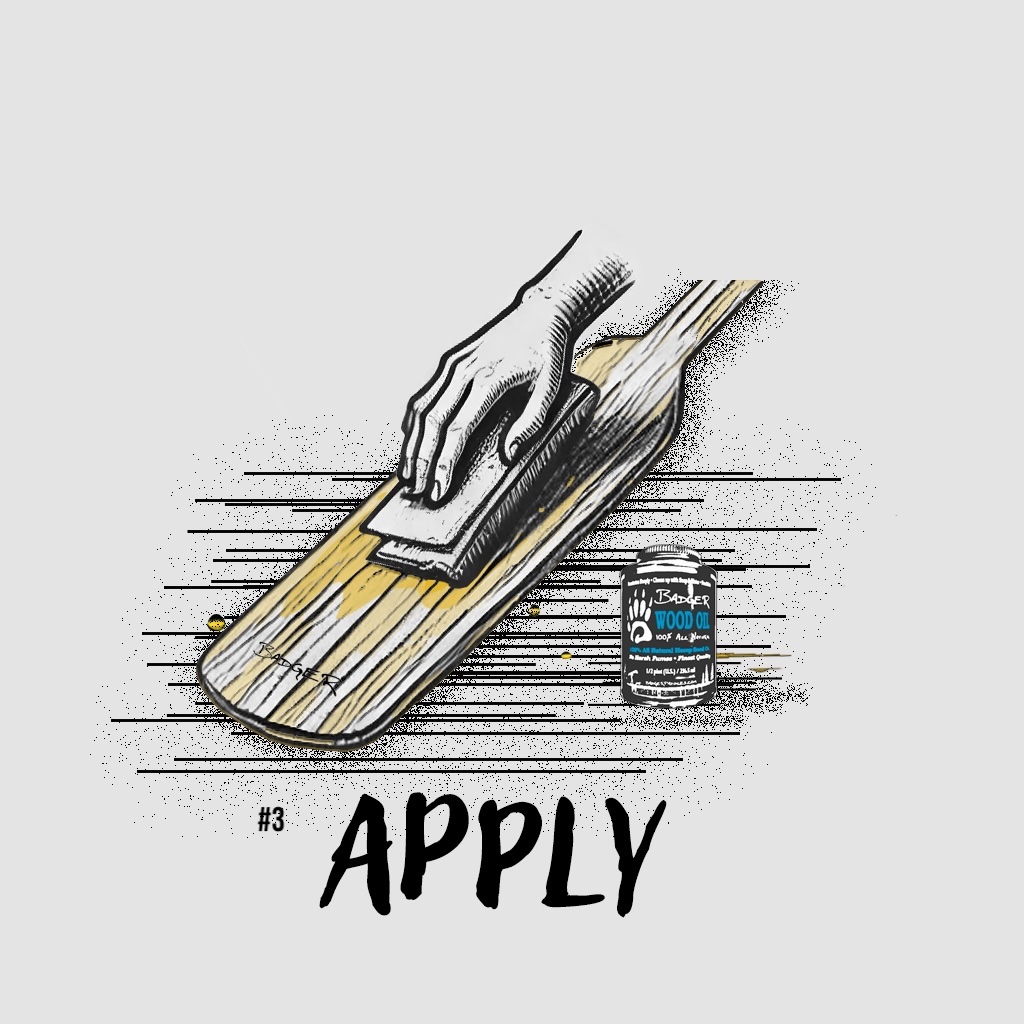
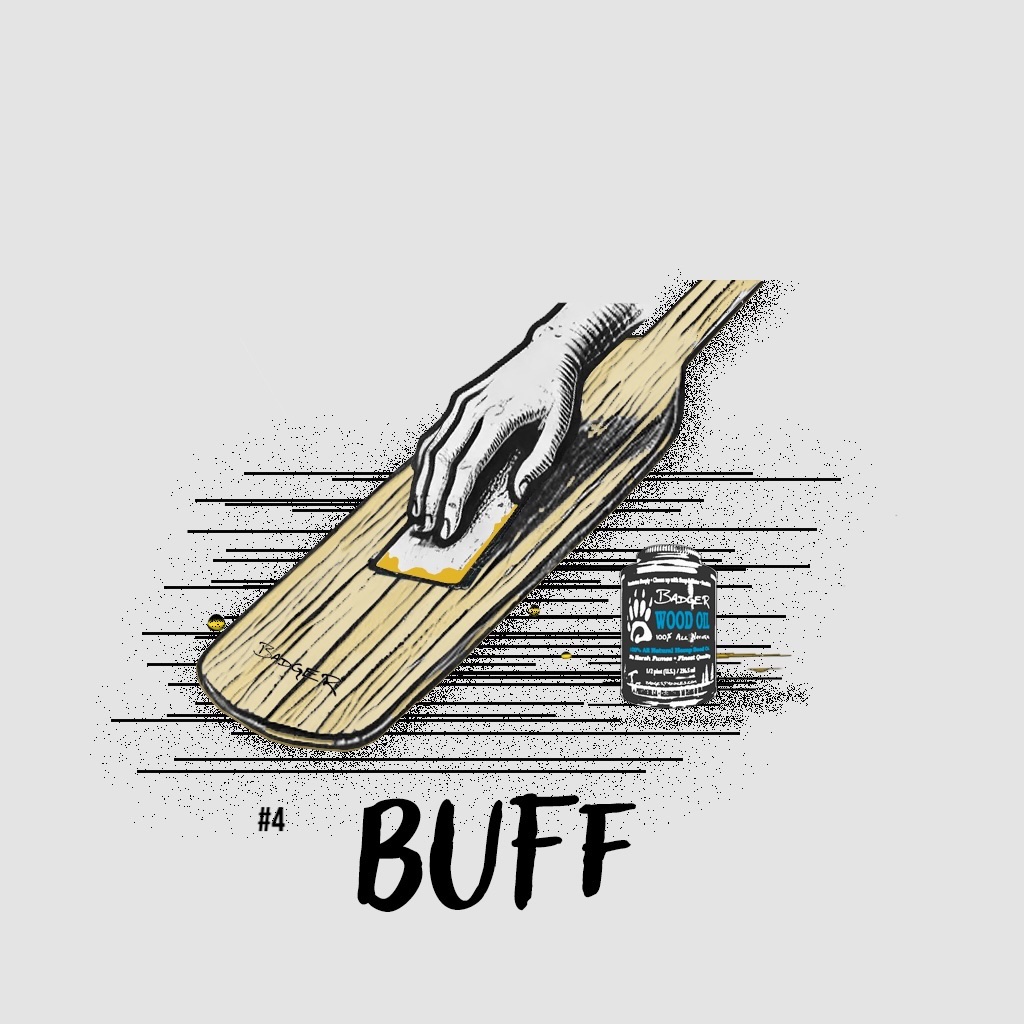

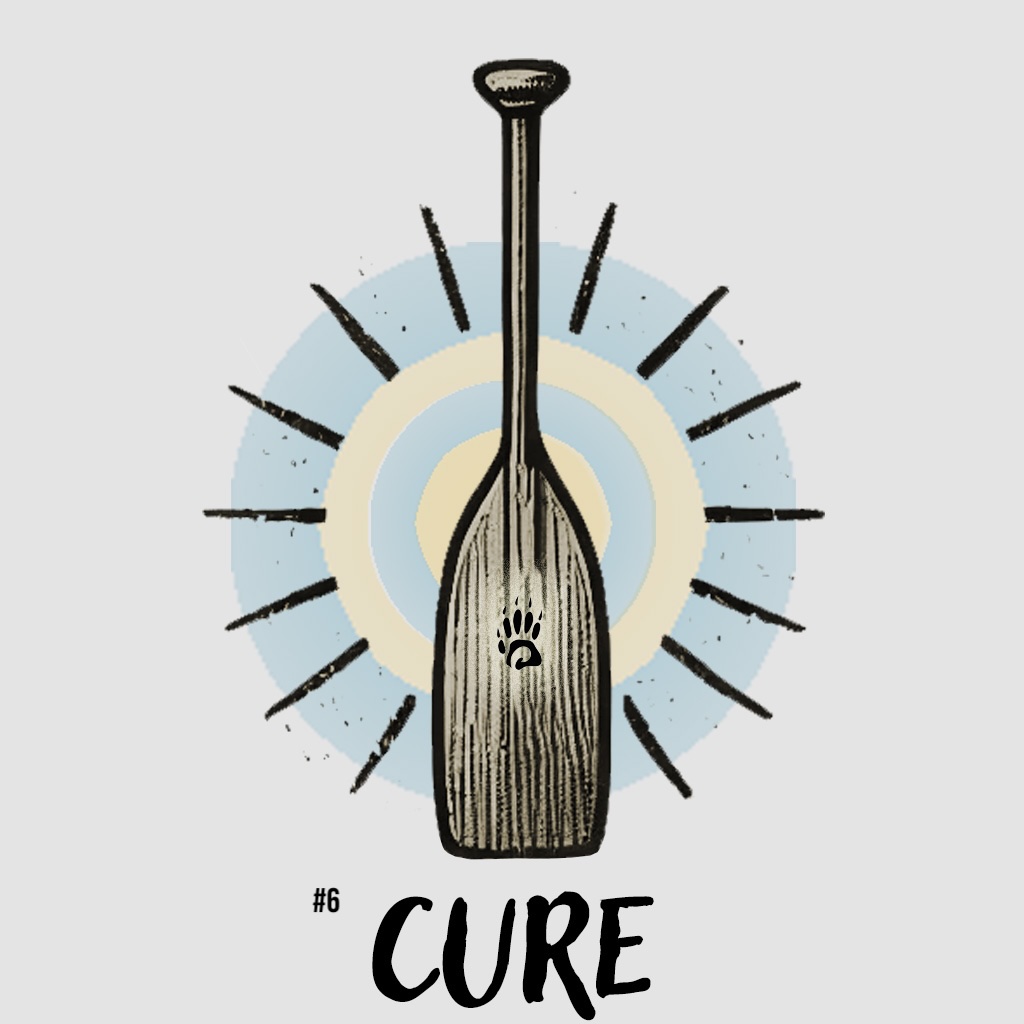
Maintaining An Oiled Canoe Paddle
What Kind of Oil Should I Use To Maintain My Paddle?
For maintenance on all our oiled canoe paddles, we recommend using our all natural Badger Wood Oil. There is a whole list of reasons why; see our page for more details on the benefits of using Badger Wood Oil. If you do not have any Badger Wood Oil available to you, then a fine quality teak or tung oil finish can also be used to maintain the finish on an oiled Badger canoe paddle.
What Are The Benefits To Oiling My Paddle?
Besides being more traditional, oil protects the wood by penetrating it. It does not have the slipperiness that a varnish finish can have when wet nor that plastic feel when dry. An oiled paddle feels warmer and silkier in the hand than a varnished shaft and grip. Thus, it helps to prevent the kind of blisters people often report from varnished paddles. We find that maintaining an oiled paddle is fairly simple and you don’t need special skills or equipment – or a dedicated dust-free environment – to preserve an oiled finish.
When Should I Oil My Paddle?
Oil is easier to maintain than a varnish finish. Our Badger Wood Oil can even be applied right at your basecamp – as long as you have enough downtime for it to cure before paddling again. How often a paddle needs maintenance depends on how much use (and abuse) it gets. But for most people, once or twice a year is enough. That said, we’ve found it’s best to re-oil your paddle after a trip if it’s seen heavy use, or at least once at the end of the season to prolong the life of your paddle.
Always keep in mind that drying time is important for any type of finish, and the oil must be fully cured before you take your paddle out on the water.
Is Badger Wood Oil Easy To Work With?
If you are working with Badger Wood Oil, you do not need to worry about any harmful VOC’s or toxic chemicals. Badger Wood Oil is made from 100% hempseed oil and is food-contact safe. It cleans up easily with soap and water. You don’t even need gloves, just a couple of clean cloth rags.
However, if you are using a Teak or Tung Oil Finish product, please be sure to read the manufacturer’s directions for use and work in a well ventilated area.
No matter what oil you use, be sure to dispose of your rags and garbage safely!
Special Notes:
See below for detailed step by step instructions for oiling a wooden canoe paddle.
Badger‘s Trademark Combination Finish:
A combination finish utilizes both varnish and oil. When we first began offering Badger canoe paddles on the market over 15 years ago, the standard commercially available combination finishes consisted of a varnished shaft and blade with an oiled grip. However, we concluded that an oiled shaft would be more comfortable in the hand than varnish. That is why, by contrast, our customary combination finish has always integrated a completely oiled shaft and grip with a hand-rubbed varnished blade that starts a couple of inches or so below the neck of the paddle. And as it turns out, many of those who prefer a varnished paddle began to opt for this combination instead – and thus has become one of Badger‘s original trademark finishes!
Before, During, and After – Using Badger Wood Oil
A quick coat of Badger Wood Oil really goes a long way in restoring the original beauty of a solid wood canoe paddle. Is your paddle ready for your next adventure?
Quick Guide For Oiling A Canoe Paddle

1. Clean 2. Sand 3. Apply 4. Buff 5. Wipe 6. Cure
Detailed Step By Step Instructions For Oiling A Canoe Paddle
1
2
3
4
5
6
7
8
9
10
How Do I Know When It’s Time To Maintain A Varnished Canoe Paddle?
What Do I Do If My Canoe Paddle Needs Re-varnishing?
Scratches should be sanded out first (if possible) and the entire varnished surface be given a light sanding with a fine sand paper. This helps the new coat of varnish to have better surface adhesion.
You may only want to “feather-out” the deeper scratches by sanding lightly but you don’t have to. Some paddlers prefer to allow a natural patina to acquire on their paddles. Some of these marks may even hold memories for you. In the case of really deep scratches and scars, however, you may need to fill with a wood filler, sanding level before finishing with a good quality marine grade varnish.
What Kind Of Varnish Should I Use To Varnish My Canoe Paddle?
We recommend a high quality marine spar varnish or an exterior polyurethane with UV protection for a durable and weather-resistant finish. There are many varieties on the market – ask your local paint expert for what is the best choice available to you.
What Are The Steps To Varnishing A Canoe Paddle?
Now that you have pre-sanded and prepped the surface, wipe the entire paddle down with a soft cloth or a tack rag to remove any surface dust. If you are only varnishing the blade of your paddle – use painters tape to give a clean edge-line to your finish. Using a brush made of natural fibre or disposable sponge, brush on the varnish according to the manufacturers directions. Hang to dry in a warm and dry dust free environment.
Be sure to watch our step by step tutorial video if you are varnishing a canoe paddle at home!
Special Notes:
Watch the video below for a step by step tutorial on “How To Varnish Your Canoe Paddle At Home“. But please make note the video is old and a little outdated – we actually use 400 grit sandpaper for sanding between coats and for any nail mark touchups. Also, we no longer use the info@ email.
Badger‘s Trademark Combination Finish:
A combination finish utilizes both varnish and oil. When we first began offering Badger canoe paddles on the market, the standard commercially available combination finishes consisted of a varnished shaft and blade with an oiled grip. However, we concluded that an oiled shaft would be more comfortable in the hand than varnish. That is why, by contrast, our customary combination finish combines an oiled shaft and grip with a varnished blade that starts a couple of inches or so below the neck of the paddle. And as it turns out, many of those who prefer a varnished paddle began to opt for this combination instead – and thus has become one of Badger‘s original trademark finishes!
For more tips on how to maintain a paddle with a combination finish please also refer to the “Steps For Oiling Your Canoe Paddle” section above.



